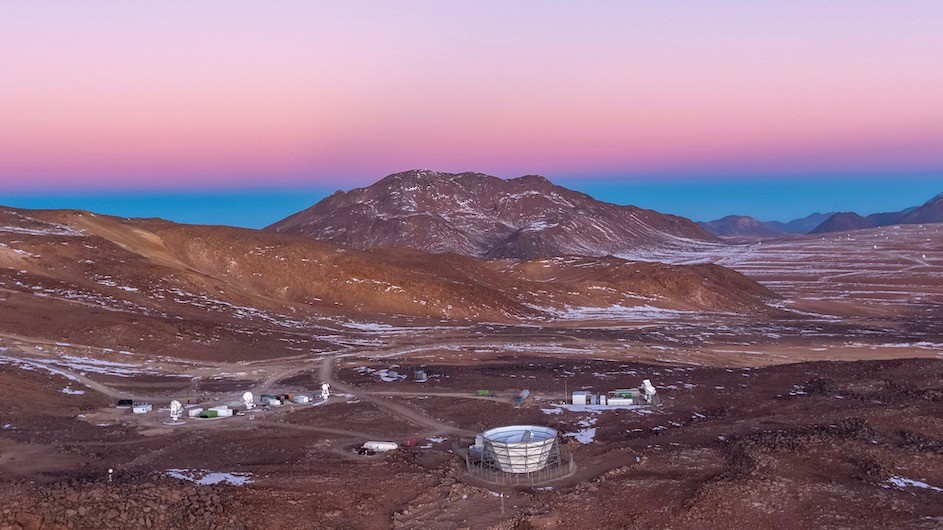Columbia Among Winners of Major Grant to Upgrade Prominent Observatory
The grant will bolster the Simons Observatory’s ability to gather data on black holes, gravitational waves, and exploding stars.

Columbia and several other institutions have been awarded a $52.66 million grant from the National Science Foundation. The grant will fund an infrastructure upgrade to the Simons Observatory, which will be renamed the Advanced Simons Observatory. Located in the high Atacama Desert in northern Chile at an altitude of 5,200 meters, the observatory provides scientists an unprecedented glimpse into the nature of fundamental physical processes that have governed the origin and evolution of the universe since the dawn of time. It uses an array of four telescopes, which have 100,000 highly sensitive detectors, more than any other telescope that is observing the cosmic microwave background, or radiation from the big bang that permeates outer space.
The project is led by the University of Pennsylvania, Princeton, and the University of Chicago. Columbia's role in the observatory is led by Colin Hill, an assistant professor of physics, who will serve as co-project scientist. Hill and his team will be responsible for managing the progress of the project toward its scientific goals, in particular ensuring that the data pipeline and its products are fully usable by the broader scientific community and facilitating synergies with other overlapping surveys, including the Vera C. Rubin Observatory, which is also in Chile.
“The Advanced Simons Observatory will be the leading cosmic microwave background experiment of the next decade, and I am thrilled that Columbia will play a key role in this project,” Hill said.
“All of us at Columbia were delighted to hear that our colleague Colin Hill is in the leadership team of this new National Science Foundation-funded program. We cannot wait to learn new facts about the early universe that these new instrumental capabilities will provide,” said Dmitri Basov, who chairs Columbia's Department of Physics.
The observatory upgrade will facilitate improved methods of study of the very early universe, as well as myriad other phenomena. This includes tools that will open a new window into the time domain of the universe, which will help researchers examine events like stellar flares, gamma ray bursts, and tidal disruptions, which are instances of a star being “eaten” by a black hole. In addition, the upgraded observatory will improve magnetic field measurement, allowing scientists to better understand how stars are formed, and allow for more sensitive mapping of stellar feedback, which will create a clearer picture of galaxy evolution.
The observatory will also revolutionize how the community will be able to access and interact with survey data. It will process eight times the data volume in one quarter the time compared to ACT, a nearby telescope that ended its operations in 2022, and will provide analysis tools and training events to make legacy maps accessible to the community.
On the sustainability front, the observatory will establish a new paradigm for green observatories at remote sites, replacing 70 percent of the power at the site with solar energy, which will save up to 2 million kilograms of CO2 emission per year and allow for more observation, with more sensitive results.
“This instrument will revolutionize our understanding of astrophysics and cosmology across a wide range of domains, from the hunt for gravitational waves produced at the dawn of time to the search for fiery transient phenomena involving black holes and exploding stars,” said Hill.
This news story was adapted from a press release published by the University of Pennsylvania.